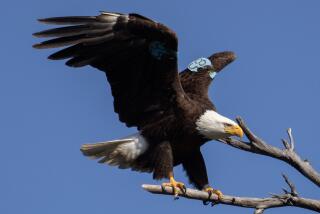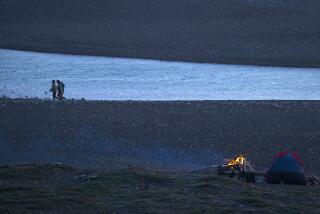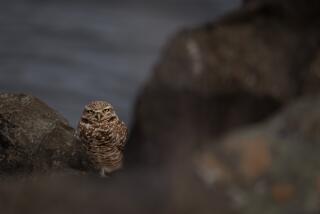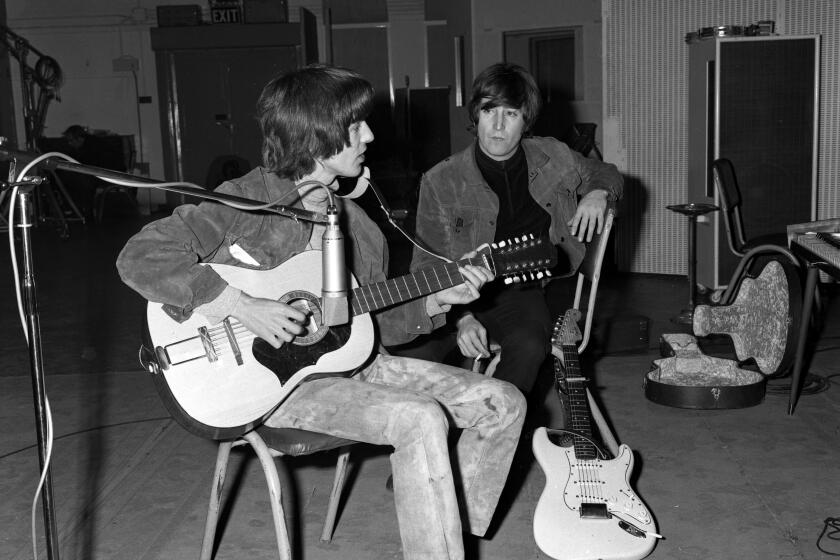Rare birds find Southern California beach housing
A rare shorebird has moved back into some of the prime real estate it abandoned seven decades ago — the playground beaches of Los Angeles County.
Now, just weeks away from the long weekend that kicks off summer, the big question from federal biologists is this: Can sunbathers, surfers and developers give the western snowy plovers the peace and quiet they need to nest and raise their young?
The nesting season of the threatened western snowy plover runs from March through September and coincides with the period of greatest human beach use, Memorial Day through Labor Day.
“We’re seeking a balance between beach recreation and habitat restoration,” Chris Dellith, senior wildlife biologist with the U.S. Fish and Wildlife Service in Ventura, said on Tuesday. “The goal is to allow humans and shorebirds like the western snowy plover to peacefully coexist along our coastline.”
Federal scientists blame successive building booms, the clatter of civilization, encroachment by nonnative vegetation and predation by crows, ravens, cats and dogs for the demise of the tiny gray and white birds that lay their eggs in small sandy depressions with easy access to ocean water.
The bird was last seen nesting near the ocean in Los Angeles County’s Manhattan Beach in 1949. It was listed as a federally threatened species in 1993, when the California population was estimated to be a 1,300 adults.
The latest counts show the plover population is rebounding and attempting to recolonize historic breeding grounds. Last year, biologists spotted about 1,800 plovers along the California coastline.
Environmentalists were surprised and delighted when Los Angeles Audubon members recently discovered the birds hunkered down in four nests on the sands of Santa Monica State Beach, Malibu Lagoon State Beach and Dockweiler State Beach.
Following the discovery of the birds in April and this month, federal biologists installed small wire cages around the nesting sites in effort to protect their eggs from harm.
But that wasn’t enough to protect all of them. The nest at Santa Monica State Beach was wiped out by high winds, and one of two nests found at Malibu Lagoon State Beach was lost for unknown reasons.
The five eggs in two remaining clutches at Malibu Lagoon and Dockweiler beach are “viable,” Dellith said, and surrounded with protective fencing.
The federal government has spent more than two decades trying to reverse the decline of the shorebirds on the West Coast with scientific studies, elaborate recovery plans and more than 140 miles of coastline designated as “critical habitat.”
Designated habitat includes Vandenberg Air Force Base and Oceano Dunes State Vehicular Recreation Area, where state and federal officials have marked swaths of coastline off-limits to people and motorized vehicles to prevent plover eggs and chicks from being crushed in the sand.
Over the years, such actions prompted angry protests from municipal leaders and citizen groups upset that sections of their beaches had been fenced off during the shorebird’s breeding season.
A decade ago, a popular bumper sticker in Morro Bay read: “Eat Plover.”
In Los Angeles County, the plovers chose nesting sites that environmentalists had created years ago in hopes of luring them back with creature comforts and security features such as native vegetation, driftwood, nearby foraging grounds and perimeter fences.
“Years of intensive management is paying off for the western snowy plover,” said Kimball Garrett, manager of the ornithology collection at the Natural History Museum of Los Angeles County. “The hope was always to give this species a chance to breed and then recolonize.”
“But it’s always going to be touch and go for this bird,” he added, “given how heavily used our beaches are in summer.”
Para leer esta historia en inglés haga clic aquí
More to Read
Start your day right
Sign up for Essential California for news, features and recommendations from the L.A. Times and beyond in your inbox six days a week.
You may occasionally receive promotional content from the Los Angeles Times.







